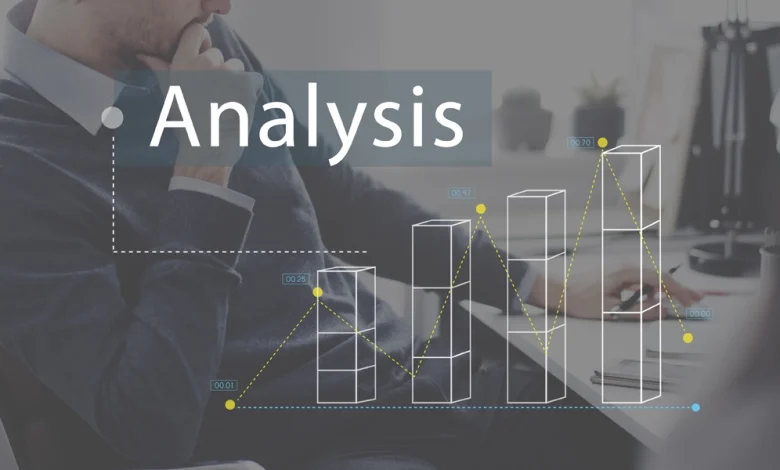
With the rapid advancement of Artificial Intelligence (AI), data analysis powered by AI technologies has become a cornerstone in the digital economy, scientific research, and strategic decision-making. This field integrates concepts from data science, machine learning, statistics, and mathematical modeling to transform vast amounts of data into actionable insights.
1. Key Concepts and Terminology
-Data Analysis: The process of inspecting, cleansing, transforming, and modeling data to discover useful information and support decision-making.
-Artificial Intelligence (AI): Systems and algorithms that mimic human intelligence by learning, reasoning, predicting, and decision-making.
-Machine Learning (ML): A subfield of AI focused on developing algorithms that improve automatically through experience with data.
-Deep Learning: A subset of ML that employs multi-layered artificial neural networks to analyze complex data such as images and natural language.
-Big Data: Extremely large and diverse data sets characterized by volume, variety, and velocity, which are difficult to process with traditional tools.
2. Stages of AI-Powered Data Analysis
-
Data Collection
From databases, sensors, social media, websites, or the Internet of Things (IoT). -
Data Cleaning
Handling missing values, removing duplicates, and correcting errors. -
Exploratory Data Analysis (EDA)
Using statistical and visualization tools to understand data structure. -
Model Selection
Choosing a suitable machine learning algorithm (e.g., regression, random forests, neural networks). -
Model Training
Feeding data into the algorithm to adjust its internal parameters for optimal performance. -
Testing and Evaluation
Assessing the model’s performance using metrics like accuracy, recall, AUC, and MSE. -
Deployment
Integrating the model into real-world systems such as dashboards, web apps, or automated decision engines.
3. Benefits of AI in Data Analysis
-
Enhanced Predictive Accuracy
AI models can learn from historical data to make highly accurate future predictions. -
Automated Decision-Making
Enables real-time decisions without human intervention (e.g., recommendation engines, fraud detection). -
Analysis of Unstructured Data
Capable of processing texts, images, videos, and audio through deep learning techniques. -
Uncovering Hidden Patterns
Detects subtle relationships in data that traditional methods may overlook. -
Operational Efficiency
Reduces time and cost associated with manual or traditional analysis methods.
4. Practical Applications of AI Data Analysis
Healthcare
-
Predicting chronic diseases (e.g., diabetes, cancer).
-
Analyzing medical imaging (X-rays, MRIs).
-
Supporting clinical decisions with predictive analytics.
Marketing and Behavioral Analytics
-
Personalizing content and offers based on user behavior.
-
Sentiment analysis of customer feedback and reviews.
-
Data-driven campaign optimization.
Finance
-
Detecting financial fraud.
-
Market data analysis for investment insights.
-
Credit risk assessment.
Industry and Supply Chains
-
Predictive maintenance for machinery.
-
Inventory optimization.
-
Demand forecasting.
Governments and Smart Cities
-
Traffic monitoring and intelligent transport systems.
-
Urban planning through population and service data analysis.
-
Enhancing public services using predictive models.
5. Challenges in AI Data Analysis
-
Data Quality
Poor data quality leads to unreliable outputs and model predictions. -
Algorithmic Bias
Models may reflect or amplify biases present in the training data. -
Privacy and Security
Concerns over personal data protection and compliance with laws like GDPR. -
Explainability
Difficulty in interpreting complex models, especially deep learning ones. -
Scalability
Efficient processing of massive datasets remains technically challenging.
6. Common Tools and Platforms
-
Python (Pandas, Scikit-learn, TensorFlow): Data modeling and processing.
-
R: Statistical computing.
-
Tableau / Power BI: Data visualization.
-
Google Cloud AI / AWS SageMaker / Azure ML: Cloud-based machine learning platforms.
-
Jupyter Notebooks: Interactive environment for development and analysis.
7. Global Real-World Examples
-
Netflix: Uses ML algorithms to analyze user viewing habits and provide tailored recommendations.
-
Google Health: Applies AI in medical imaging analysis with accuracy surpassing human experts.
-
Amazon: Analyzes shopping behavior for product recommendations and inventory management.
8. The Future of AI Data Analysis
-
Real-Time Analytics will become standard for dynamic decision-making.
-
Integration with emerging technologies like quantum computing and IoT.
-
Focus on Ethical AI to ensure fairness, transparency, and accountability.
-
Rise of AutoML platforms, making advanced analysis accessible to non-experts.
AI-powered data analysis is more than a technological tool—it’s a strategic enabler across all sectors. Its power lies in turning chaotic data into structured knowledge that drives precision, innovation, and competitive advantage. As AI technologies continue to evolve, the role of intelligent data analysis will become even more indispensable for institutions, researchers, and decision-makers.


